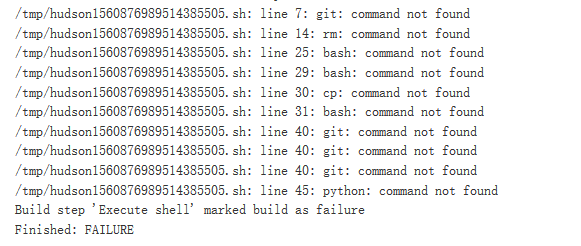asan常见的 抓错报告 编译带上 -fsanitize=address 链接带上 -lasan
global-buffer-overflow memcmp的长度可能越界
R: AddressSanitizer: global-buffer-overflow on address 0x000000a8f8ff at pc 0x7ff6eafde870 bp 0x7ffc75471220 sp 0x7ffc754709d0
READ of size 49 at 0x000000a8f8ff thread T0
#0 0x7ff6eafde86f in __interceptor_memcmp ../../../../gcc-5.4.0/libsanitizer/asan/asan_interceptors.cc:333
注意memcmp的第三个参数,取两个字符串中最小的长度
相关概念 OOB memory access
heap-buffer-overflow strlen访问内存越界
assert(n == strlen(val)); AddressSanitizer: heap-buffer-overflow
可能字符串没有分配’\0’的空间,用strlen会导致堆空间越界
AddressSanitizer: attempting to call malloc_usable_size
这个rocksdb的报错。 搜了一圈,二进制是jemalloc编的,和asan和rocksdb 有冲突产生的报错。临时禁止掉
ASAN_OPTIONS=check_malloc_usable_size=0
重编二进制,不带jemalloc,好使了
AddressSanitizer: attempting to call malloc_usable_size() for pointer which is not owned: 0x7f121aed6000
#0 0x7f121f506990 in __interceptor_malloc_usable_size ../../../../gcc-5.4.0/libsanitizer/asan/asan_malloc_linux.cc:104
#1 0x8c7929 in rocksdb::Arena::AllocateNewBlock(unsigned long) util/arena.cc:221
#2 0x8c79c4 in rocksdb::Arena::AllocateFallback(unsigned long, bool) util/arena.cc:114
#3 0x8df67a in rocksdb::LogBuffer::AddLogToBuffer(unsigned long, char const*, __va_list_tag*) util/log_buffer.cc:24
#4 0x8df8c8 in rocksdb::LogToBuffer(rocksdb::LogBuffer*, char const*, ...) util/log_buffer.cc:88
#5 0x749300 in rocksdb::DBImpl::FlushMemTableToOutputFile(rocksdb::ColumnFamilyData*, rocksdb::MutableCFOptions const&, bool*, rocksdb::JobContext*, rocksdb::SuperVersionContext*, rocksdb::LogBuffer*) db/db_impl_compaction_flush.cc:183
#6 0x74c1f4 in rocksdb::DBImpl::FlushMemTablesToOutputFiles(rocksdb::autovector<rocksdb::DBImpl::BGFlushArg, 8ul> const&, bool*, rocksdb::JobContext*, rocksdb::LogBuffer*) db/db_impl_compaction_flush.cc:229
#7 0x74d3b0 in rocksdb::DBImpl::BackgroundFlush(bool*, rocksdb::JobContext*, rocksdb::LogBuffer*, rocksdb::FlushReason*) db/db_impl_compaction_flush.cc:2025
#8 0x74da4f in rocksdb::DBImpl::BackgroundCallFlush() db/db_impl_compaction_flush.cc:2059
#9 0x8e8a27 in std::function<void ()>::operator()() const /usr/local/include/c++/5.4.0/functional:2267
#10 0x8e8a27 in rocksdb::ThreadPoolImpl::Impl::BGThread(unsigned long) util/threadpool_imp.cc:265
#11 0x8e8c0e in rocksdb::ThreadPoolImpl::Impl::BGThreadWrapper(void*) util/threadpool_imp.cc:303
#12 0x7f121e1fb8ef in execute_native_thread_routine ../../../../../gcc-5.4.0/libstdc++-v3/src/c++11/thread.cc:84
#13 0x7f121dd19dc4 in start_thread (/lib64/libpthread.so.0+0x7dc4)
#14 0x7f121da477fc in __clone (/lib64/libc.so.6+0xf67fc)
AddressSanitizer can not describe address in more detail (wild memory access suspected).
SUMMARY: AddressSanitizer: bad-malloc_usable_size ../../../../gcc-5.4.0/libsanitizer/asan/asan_malloc_linux.cc:104 __interceptor_malloc_usable_size
Thread T2 created by T0 here:
#0 0x7f121f4a80d4 in __interceptor_pthread_create ../../../../gcc-5.4.0/libsanitizer/asan/asan_interceptors.cc:179
#1 0x7f121e1fba32 in __gthread_create /home/vdb/gcc-5.4-build/x86_64-unknown-linux-gnu/libstdc++-v3/include/x86_64-unknown-linux-gnu/bits/gthr-default.h:662
#2 0x7f121e1fba32 in std::thread::_M_start_thread(std::shared_ptr<std::thread::_Impl_base>, void (*)()) ../../../../../gcc-5.4.0/libstdc++-v3/src/c++11/thread.cc:149
ref
- 这里有建议不要使用memcmp的讨论,还是怕越界 https://github.com/cesanta/mongoose/issues/564
- https://github.com/pcrain/slippc/issues/16 一个global buffer overflow case

